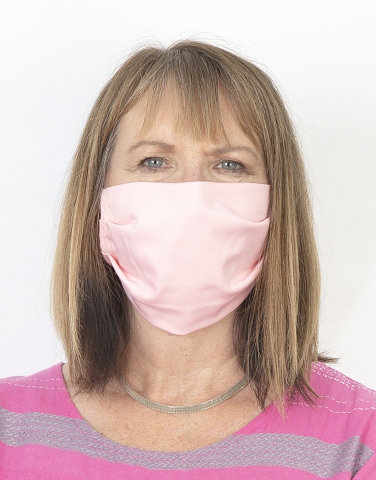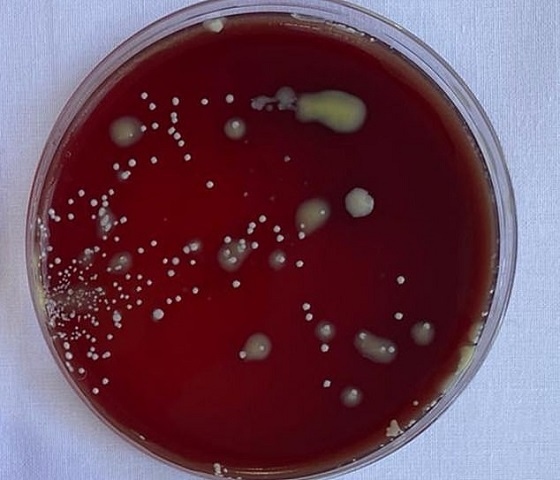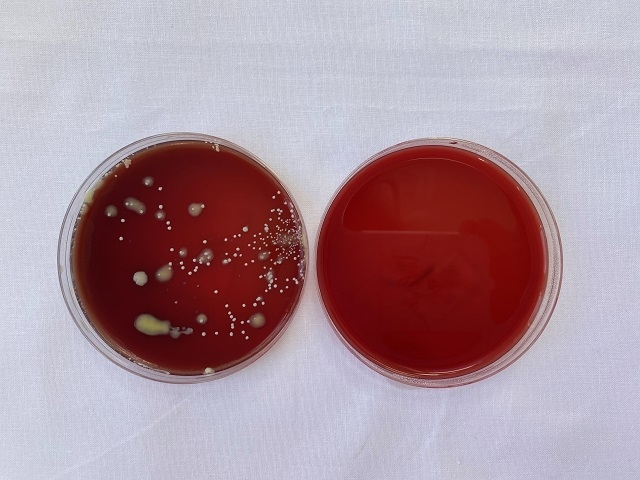Science column: Why we should all be wearing face coverings to prevent spread of Covid-19
Date published: 02 October 2020

Photo: Professor Val Edwards-Jones
Professor Val Edwards-Jones
Professor Val Edwards-Jones, of Norden, is a world-renowned Professor of Medical Microbiology, with a particular interest in infection control, antimicrobial resistance and alternative treatments to antibiotics. She has previously advised and appeared on C4’s Embarrassing Bodies.
Here, in a new scientific Rochdale Online column, she explains why we should be wearing face coverings, how they help prevent the spread of Covid-19, and how to ensure you are correctly wearing and removing the masks whilst minimising risk of infection.
I’ve been wearing a homemade face covering since February when the news first broke about Covid. I had never heard of an illness like this before, especially with such a high death rate. I wasn’t prepared to go yet and wanted to protect myself and others. I handmade masks for my friends and family.
We see people wearing face masks around the world and they are commonplace in Far Eastern countries where many of the new respiratory diseases originate, but in the Western societies, people seem to find it more difficult to comply with advice to wear them.
The commercially available and disposable face masks worn by healthcare staff in hospitals are rigorously tested and are termed PPE (personal protection equipment). In order to be classed as PPE, they have to undergo a series of rigorous testing undertaken in special laboratories.
Face coverings or face masks, as recommended by the World Health Organization (WHO) are usually made of fabric and should be triple layer. This is to minimise the pore size in the fabric and hopefully restrict the passage of organisms created in droplets during coughing, sneezing and talking through the face covering.
Wearing a face covering is about protecting others. If you do not wear a face covering, you will produce droplets (potentially containing the coronavirus) during talking, coughing and sneezing, which will be expelled into the surrounding atmosphere. This is dangerous for everyone around you.
If you wear a mask, then these droplets will be stopped by the face covering and people around you will be safer. How many viral particles (viral load) is expelled by the person and subsequently comes through the mask (for example, during coughing) will depend on the number of layers in the mask.
Studies have shown that a single-layer covering (for example, a handkerchief) will reduce the viral load by approximately 20%, a two-layer mask by 50-80% and a three-layer mask by up to 100%.
The converse is also true: if someone else is wearing a mask, the numbers of viral particles will be reduced by similar parameters so the contamination in the surrounding atmosphere will be markedly reduced to levels that may not cause disease.
I have demonstrated this by coughing onto a blood agar plate wearing no mask, and several triple-layer masks: disposable mask, a healthcare mask and one I have produced myself. Whilst the colonies grown are bacterial, bacteria are larger than viruses. Viruses are 1,000 times smaller and you can’t demonstrate their presence as easily. If bacteria can get through a mask, then it won’t be stopping viruses.




If you, as an individual, breathe in the coronavirus, the virus will adhere to cells in your respiratory tract and immediately start to multiply. They reproduce very quickly with an incubation period of two-five days, when you normally will start to have symptoms.
The length of the incubation period depends on the number of viral particles you initially breathe in (the viral dose). In some cases, the dose may be so small that it causes no obvious symptoms because the individual’s immune system has dealt with it. Some research indicates that very low numbers (as low as 100 viral particles) can cause disease in susceptible people.
The lower the viral dose, the fewer symptoms and severity of disease. Hopefully the immune system will kick in and help you recover from the disease. However, if you breathe in very large numbers of viruses (a high viral dose), then the virus will reproduce the same, but cause more severe symptoms very quickly as the virus overwhelms the immune system just by sheer numbers alone. Higher viral dose has been linked with a more severe disease.
Now we are starting to understand the virus more, there are things we can do to, to protect more susceptible people.
Washing your hands is known to reduce spread of Covid, as is social distancing (because the droplets cannot reach you) but, most importantly, we now realise that wearing a mask or face covering reduces the viral load and keeps the airborne risk of infection to a minimum.
There is a correct way to put on a mask and wear it comfortably:
- Clean your hands by washing or sanitising
- Take out your mask and place over the bridge of your nose and under your chin, securing with elastic or ties around your ears or at the back of your head.
- If you do use ear straps, run your fingers under the elastic at the bottom of your ear and pull around to the top of your ear.
- Choose a mask with a nose bridge if you wear glasses and smooth this around the bridge of your nose to prevent them from fogging.
- Remove your mask with the ear straps. DO NOT TOUCH the front of the mask.
- Keep in a bag until it is washed.
Most fabric face coverings can be washed, so are reusable and environmentally friendly.
I have produced a face covering which is three-layer (recommended by WHO) and offers extra protection as it contains an inner layer with impregnated silver ion technology. Silver ions kill microbes (including human coronavirus) very quickly, so are an added benefit to the wearer.
These can be bought at www.everycloudsp.com
Do you have a story for us?
Let us know by emailing news@rochdaleonline.co.uk
All contact will be treated in confidence.
Most Viewed News Stories
To contact the Rochdale Online news desk, email news@rochdaleonline.co.uk or visit our news submission page.
To get the latest news on your desktop or mobile, follow Rochdale Online on Twitter and Facebook.


